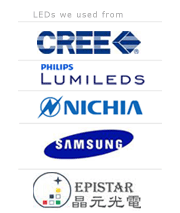News
Search
Popular search



Philips Lighting’s latest market data shows uptake of
LED lighting continues to increase as more New
Zealanders make the switch for better energy
efficiency. That growth is expected to continue as the
price point for this next generation lighting option
continues to reduce.
Philips’ third generation LED bulb range, which is being
released in New Zealand over the coming month, is
even more energy efficient than previous models and is
priced lower. For example, the 13W LED bulb (75W
incandescent bulb equivalent), which is one of the most
popular in Philips’ LED bulb range, now draws 12.5W of
electricity to produce similar light output and has
reduced in price from $24.95 to $19.95.
Compared to incandescent light bulbs the energy
efficiency gains from using LED light bulbs are
significant. Philips LED light bulbs use up to 80% less
energy1 and can last up to 15 times longer than an
incandescent bulb, with a lifetime of up to 15,000
hours.
“With lighting making up around 12% of the average
New Zealand home’s electricity bill, converting to
energy efficient lighting is one simple and effective way
to reduce overall energy consumption and cost,
especially with prices for buying LED bulbs having
come down,” says David Procter of Philips Lighting
New Zealand.
The incentives on consumers to make the switch to
LED for energy efficiency savings are proving
compelling. As a category, all LED bulb sales in New
Zealand supermarkets in the 12 months to the end of
February 2014, are 34 times greater than sales in the
previous year. Philips’ range of LED bulbs has captured
70 percent of that growth, as a result of wider
distribution and its previous reduction in the price of its
LED bulbs in June 2013.
LED bulbs are mercury-free and do not require
consumers to compromise on quality and style as they
produce an instant warm, white, glare-free light and
have been designed to resemble a traditional light bulb.
They are also compatible with most existing light
fittings (screw or bayonet cap sockets) making it
hassle-free to make the switch.
“With LED lighting becoming increasingly accessible to
mainstream consumers and this further reduction in the
cost of Philips’ LED bulb range, we anticipate the trend
for growth in consumer uptake of LED for lighting their
homes to continue,” says David Procter.
Philips Lighting anticipates that at least 50% of global
lighting will be LEDs by as early as 2015, and 75% by
the end of this decade.



